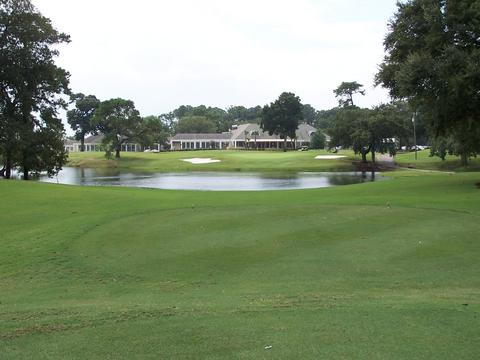
The well established Surf Club is located in zip code 29582 in North Myrtle Beach. According to crime data, the zip code has ratings of 7 for violent crime and 7 for property crime on a scale of 1 to 10, a surprise to anyone who has played the course and driven through the area.
A colleague of mine in the corporate world once advised me to "Torture the data and it will confess." That is not bad advice for those of us contemplating a move to what we hope will be, among other things, a safe and secure neighborhood. Yet most data in books that help us choose the "best place" to live unfortunately traffic in crime statistics that are misleading. They almost always average crime data for an entire metro area, rather than by zip code. Sorry, but if I am going to live in a golf community 10 miles from the center of the local city, I am more interested in data pertinent to my local zip code. Typically the numbers from a city tend to skew the overall crime statistics in the metro area. Not helpful.
Take Myrtle Beach, for example. Most magazines and books that report crime statistics rate Myrtle Beach pretty poorly. I decided to check all the zip codes in the Myrtle Beach area by using the helpful BestPlaces.net, which provides data not only about crime but also taxes, population, and healthcare. On a scale of 1 to 10 (worst), BestPlaces gave the city of Myrtle Beach violent and property crime ratings of 7 and 8 respectively. The Myrtle Beach metro area received a 6 & 6 and the surrounding Horry County a 5 & 6. However, individual zip codes within the Myrtle Beach metro area ranged from a 3 to an 8, a wide swath. Therefore, while the overall data could scare you away from considering any community in the area, zip code 29587, for example, which brackets highway 17 near the Beachwood and Possum Trot golf courses, scored ratings of 5 and 5. On the other hand, 29582 in North Myrtle Beach and home to the stable and now private Surf Club, rated a 7 in both categories.
Those who plan to avail themselves of the cultural and entertainment options of a nearby city should consider the crime rates there, but most cities are by nature less secure than the surrounding area. If you plan to avail yourself of the culture and entertainment a local city might have to offer, then city crime data is worth considering, if only to remind you to lock your car doors and park in well-lighted areas. But don't get snookered into thinking a generalzied crime rate has anything to do with the community down the road.
























